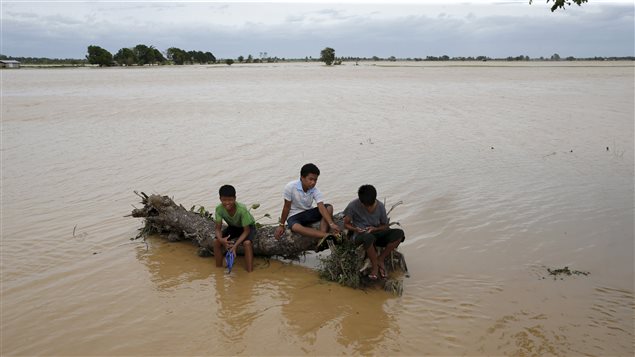As world leaders gather in Paris for the 21st United Nations climate change conference, UNICEF is urging countries to not only adopt tough measures to fight climate change, but invest in climate change adaptation for the world’s poorest and most vulnerable countries.
“For us at UNICEF, we have to be sure that both happen,” said David Morley, president & CEO of UNICEF Canada. “We have to reduce emissions but we also have to be sure to be able to help the poorest and the most vulnerable people who are already being affected by climate change.”
ListenSpeaking on the phone from Paris where he is attending the climate change conference, known as COP21, Morley applauded Canada’s pledge to contribute $2.65 billion over the next five years to help developing countries tackle climate change.
“I think it’s a very promising sign,” said Morley. “It’s part of Canada committing closer to its fair share and that’s very important.”
Canada’s Environment and Climate Change Minister Catherine McKenna announced on Monday that Canada is contributing $30 million to a special fund that will help the world’s least developed countries support and organize climate change adaptation projects.
Children at risk
Children, particularly in the poorest areas of the world, are disproportionately vulnerable to the impacts of climate change. It’s a fundamental threat to their most basic rights, including access to food, water, education and survival, Morley said.
People who live in flood-prone areas are seeing more floods and more tropical storms, and people living in drought-prone areas are seeing more droughts, Morley said.
More than half a billion children live in areas with extremely high flood occurrence and 160 million in high drought severity zones, leaving them highly exposed to the impacts of climate change, according to a UNICEF a report released ahead of the climate change conference.
“One of the things that happens when there are floods is that it hurts the water system and the sanitation and they become polluted,” Morley said. “The end result is that the rates of diarrhea go up and the diarrhea is an underlying cause of death for millions of children a year.”

Malnutrition caused by drought is another major problem for child health, he said.
“If children in their first two years of life are suffering from malnutrition, it becomes irreversible, it will affect them for the rest of their lives,” Morley said.
However, there are options to deal with these issues, Morley said. For example three years ago, there was a severe drought in Ethiopia. The drought resulted in a famine in neighbouring Somalia, but not in Ethiopia where they had developed better coping mechanisms with the help of international agencies, he said.
“We worked with the government of Ethiopia and we had health posts all around the country, so that if a child was suspected of malnutrition, they could be treated very-very quickly,” Morley said. “We have to be able to strengthen those kind of community systems so that people can adapt, and we have to make that emissions come down so that things don’t get even worse.”
Related stories:
Canada pledges $30 million for climate projects in poorest countries
Canada doubles international contribution for developing countries climate change fund







For reasons beyond our control, and for an undetermined period of time, our comment section is now closed. However, our social networks remain open to your contributions.